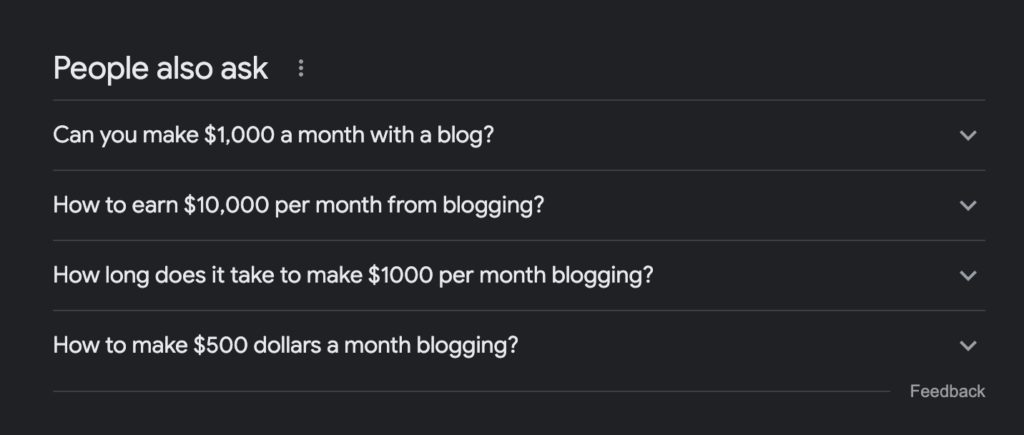Something happened to the internet.
Have you noticed it?
It’s gotten boring. Posts are popping up that sound like they are talking directly to Google. As if they are courting Google. Trying to win over the number 1 spot by doing all of (and only) the things Google loves.
Do you know what I’m talking about? Have you seen the types of articles I’m referring to?
They read like a checklist of keywords and questions that people type into Google and the hope is that that means that Google will go, “OH, this is exactly what people are looking for, we’ll stick this on page 1!”
But the articles are, well, I won’t sugarcoat it.
They are boring.
I mean. So. Very. Boring. This is what writing for SEO has become for many people, and that’s why they don’t understand why their brands aren’t growing.
To grow your brand successfully with SEO, you must learn how to incorporate SEO copywriting. It doesn’t matter if you’ve mastered the art of on-page SEO or learned all the SEO tips.
If you don’t write content that is engaging then you’re going to get left behind in the long term because nobody will remember what you’ve created.

Do I have to be boring to make it to page one? I won’t do it. I just won’t.
Actually, that’s not even the right question. You can be boring on page one or you can be boring on page 35.
The right question is, “What is the reason I want to be on page one when someone searches for something on Google?”
HINT: It has to do with your Hero!
That’s right! You want your Hero to find your article that solves one of their problems and fall a little in love with you.
Are people going to fall in love with you over a boring article?
I mean there’s someone for everyone, I guess, but let’s increase your chances of that Hero not only finding you but also of seeing you as their potential guide toward improving their life in whatever way you wish to help them improve.
How do you do that, then?
How to Send the Right Signals to Google While Still Delighting Your Reader
Ok, let’s assume you’re already armed with your keyword and a bunch of related long-tail keywords that you want to make sure you talk about in your post.
You’ve done the research and you’re ready to sit down and actually write.
How do you avoid boring your audience with a post that’s all about covering all of the keywords and nailing the SEO perfectly?
You practice good SEO Copywriting.

What is SEO Copywriting?
Let’s break that down.
SEO is Search Engine Optimization. It’s following a particular set of guidelines that will help your article stand out to search engines as a good resource for a particular topic so that it will have a chance of being one of the first articles that Google (or any other search engine) shows it’s users when they search for a term that relates to the topic you’ve written the article about.
Copywriting is writing with the purpose of convincing your reader to take action.
Most of the time we think of copywriting as being used to sell something. And that’s usually true.
But when you start to think about your blog posts as Marketing materials, then all of the posts that you are writing are also forms of copywriting. You might not be convincing someone to buy a product with every post, but you are trying to convince them to buy into you.
So, SEO Copywriting is a combination of the two. You are writing in a way that will help your post rank well in those pesky search engine results and also convince your reader of something.
Got it? Okay, good. Here’s how you do it.

#1 You write for your audience FIRST.
Specifically, you write for your Hero first.
If you don’t know what a Hero is yet, well, let me welcome you to Pocket Business!
Your Hero is the one person you are working so hard to help. He is the person whose problems you are helping to solve.
He’s a representation of a larger audience, but he’s a singular person that you will need to know very, very well.
Some people might be thinking this sounds like an “avatar”, but if you think of things like age, sex, race, and religion when you think of an avatar, then you are on the wrong track for the Hero.
The Hero is about worldviews. You and he see the world in the same way when it comes to the particular topic you are covering with them.
Our Hero, at Odd Noodle, wants to build an online business and can understand that the best way to do that is through offers that they will create that solve a problem for their own Hero.
We understand the problems and emotions that go along with that worldview.
Because we understand those problems and emotions, we speak directly to those problems and emotions when we write for our Hero.

That is our first objective. When our Hero comes across a post, we want him to know that we “get it”. We understand what he’s facing and we are the ones that can help him.
It’s not easy to do that with a robotically written post that starts out as a bid to Google to land on page 1.
So we first talk to our Hero.
SEO comes second in our writing.
Once we’ve spoken to the Hero, we go back and make sure we’ve got our keyword in the appropriate places, written a post that answers all of the questions that our Hero might have on the topic, and add links to any material (either our own or from another resource we are comfortable recommending) that might help further the Hero’s journey.
Following best on-page SEO tactics doesn’t mean focusing on writing for the robots. One of the best things that you can do for your SEO rankings is to create content meant for a person to read that will keep them engaged.

#2 Make Shareable Content
One thing we know that Google likes is content that gets social shares.
What makes people share content then? There are a few things.
Building a Bond
Sharing content creates a bond. When you share content that you enjoy with someone else that you think will enjoy it, you create or strengthen a bond between you.
It’s a little reminder, “Hey we have this thing in common and I think you’ll love this article about it”.
Validation
People also share content that validates something they believe in or know to be true.
Yes, this one is a little bit of, “See I told you so!” but in the least annoying way possible.
Unless you share the content and also say “SEE! I told you so!”.

Value
If what you have written provides value, then it is shareable.
That value might be a great tutorial on something that your hero wants to learn. It might be something that entertained your Hero. It might be a well-told story.
If your Hero makes it to the end of your content and decides it has been valuable in some way to them, they are more likely to share it.
There is one thing I can think of that would make people NOT want to share your content.
Boredom.
If you’ve bored your reader to tears with a “Written Just For Google” style of post, then you will have a very hard time getting that content to be shared.
The value in writing shareable content is that you have written something that your audience will enjoy and appreciate. When they share it, it sends a signal to Google that this is content that people find value in.
Google wants to show content that is valuable.

#3 Solve All the Problems
One thing that Google likes is the long time spent on a page.
And one way to keep your reader on your page for a long time is to fully solve the problem they are having.
Let’s use Gardening as an example.
You want to write a post about how to grow basil. You could write a simple post that covers the basics.
Get some basil seeds. Get some dirt. Get a pot. Put dirt in the pot, put the seeds in the dirt, and put the whole thing on a windowsill. And water it.
You could turn that into an 800-word post, I’m sure of it.
But.
What if you started with a funny story about your own experience growing basil? And then talked a little about the different types of basil. And what types of dirt it can grow in. What about fertilizer? And just how much sun does Basil need?
Should basil be grown in a clay pot or is it just fine in a plastic one?

You could talk about signs that they should look for that mean the plant is having some kind of problem and how to fix them. And you could talk about how to know the Basil is ready to be harvested.
At the end, you might even link to some of your favorite recipes that include Basil.
By the time your reader leaves your post on How to Grow Basil, they are fully prepared to grow Basil and don’t have any other questions. You even answered some questions they didn’t even know they had.
That’s probably more like an 1800-word post.
And while it’s still writing to your Hero first, it’s a pretty safe bet that you also hit a bunch of long-tail keywords and answered a lot of those “People Also Ask” questions that Google shows when you do a search.

If you can wrap all of that information up in a way that is also entertaining, you’ve got a post that will have a long time on the page.
And, more importantly, you will have a Hero who now knows you really know what you’re talking about when it comes to Basil!
That’s how you start to build trust with your readers.
#4 Write a Great Title
You might be wondering why I’m talking about the title of your post at the end of this article on how to write for Google & your audience.
I have a very reasonable explanation.
It would help if you wrote your titles after you’re done writing your post.
I always start with a simple working title and then when I’m done with the post and have a feel for the overall message of the post, I go back and rewrite the title.

Why do we care about the title?
The title is the very first interaction your audience is going to have with you! Whether they find your article on Pinterest or in a Google search, you have a very small window of opportunity to convince them to click on your post.
Your title needs to compel them to do that. If it doesn’t, they will continue to scroll right past you and your fabulous article on how to grow basil until they see a title that compels them to click.
That doesn’t mean that article is better than yours. It does mean that you missed an opportunity to connect with someone who might have been your Hero because your title didn’t pull them in well enough.
Lucky for you we have a complete resource for writing great post titles.

What I Hope You Remember About How To Practice Good SEO Copywriting
The important theme to take with you from this article is that you are not writing blog posts so that you can rank number one on Google.
You are writing blog posts to help your Hero solve a problem.
If you do that well enough while keeping good SEO practices in mind, you stand an excellent chance of getting to the top of search results.
You might be able to squeak onto page one and maybe even the top spot for a keyword by writing a robotic post that is strictly for Google.
But what is the point of that if it doesn’t capture the attention of your Hero?
